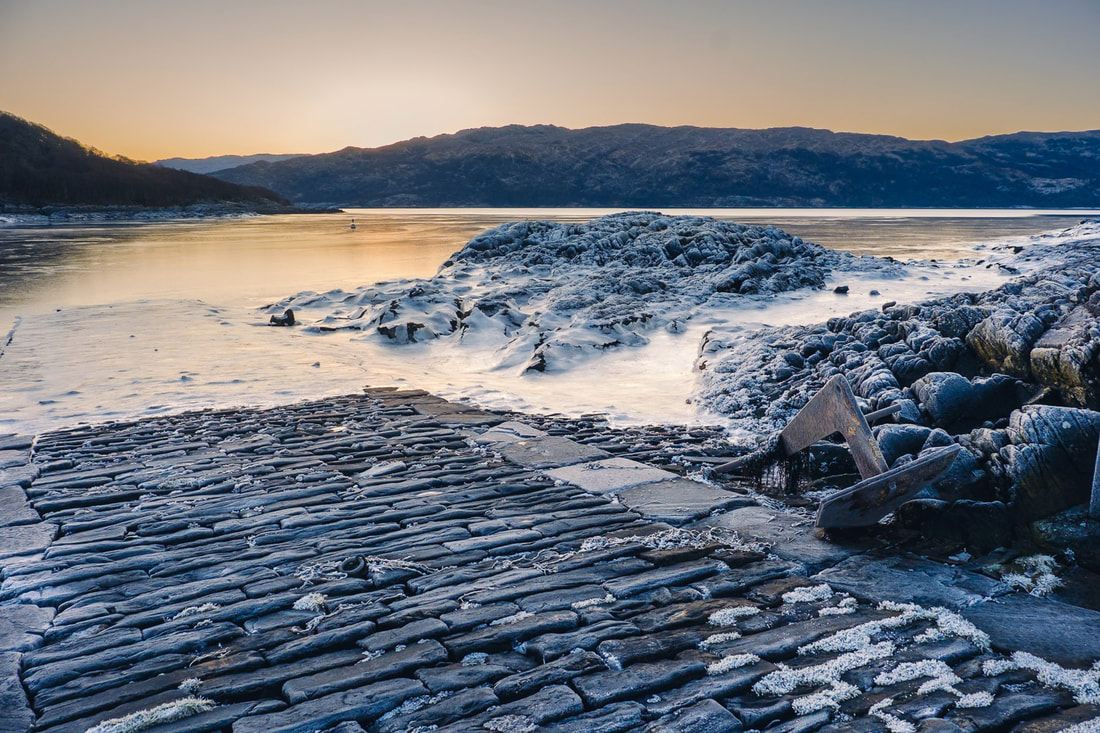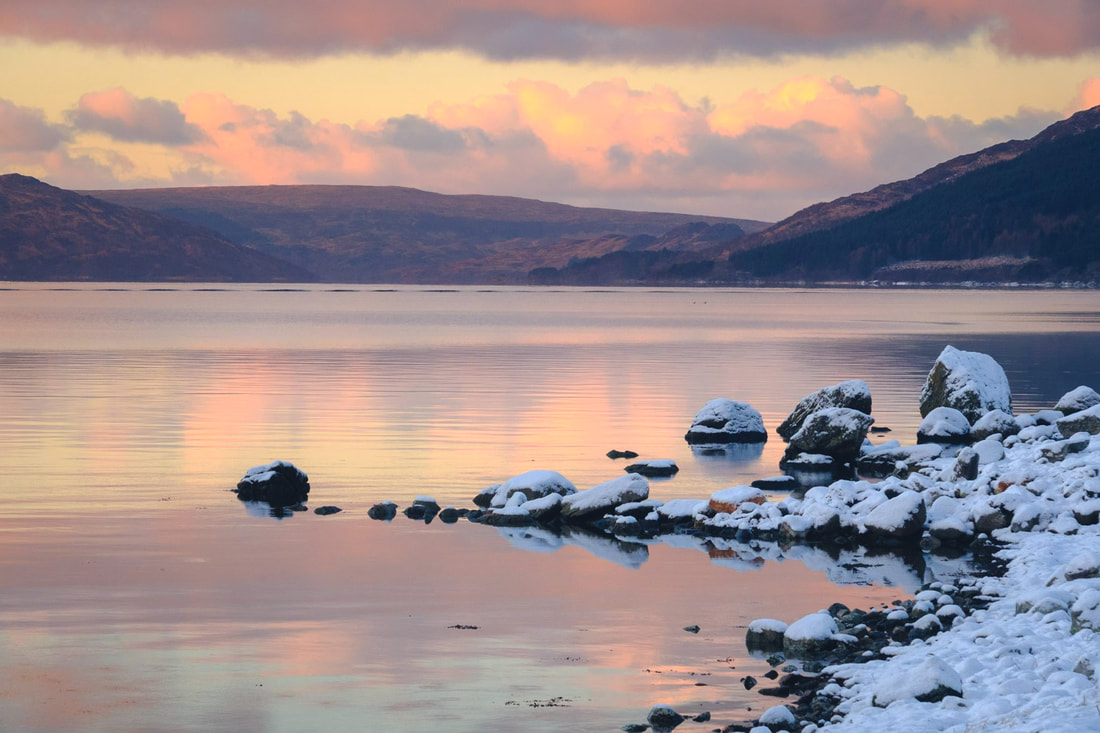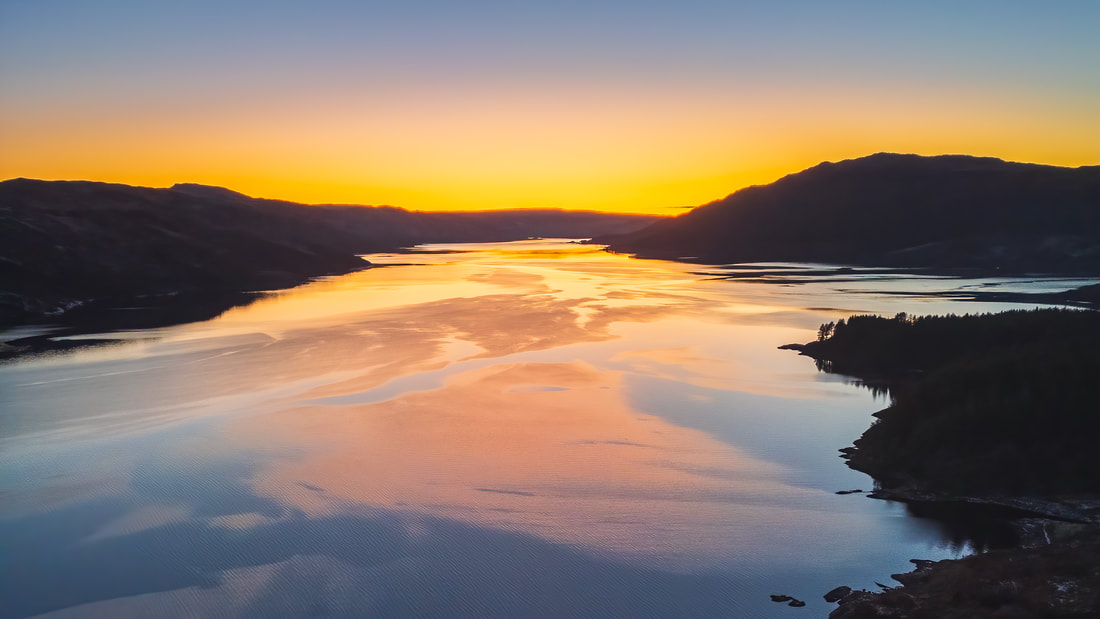|
I’m sitting writing this while the wind is howling outside, the rain is battering off the window of my studio and the sea is being whipped up into a frenzy as yet more stormy weather passes over us here on the shore of Loch Sunart. This type of weather sure seems to have been a feature of the last few weeks, with us seeing no less than three named storms during January. We had storm Henk at the start of the month and storms Isha and Jocelyn at the end of the month. Of the three, Isha had the greatest impact on the UK with it being the most significant wind-storm to affect the UK since storm Eunice in February of 2022. However, for us here on the north-west coast of Scotland it was storm Jocelyn that felt to be the most severe, with wind gusts well in excess of 100 mph being measured in a number of places up this way. As well as these named storm days, there seemed to be many other days on which the weather was just a wild, so this limited the number of times I was able to get out with my camera during January. However, I did venture to the loch shore in front of the house during storm Jocelyn and managed to take the following image while struggling to stay upright as gust after gust attempted to lift me off my feet. Thankfully, in the second week of the month, the sky cleared to bring a spell of extremely still and cold weather. The inordinate amount of rain that storm Henk had dumped on us meant that a layer of fresh water had settled on the surface of Loch Sunart, and it froze to form a layer of surface ice that ran from the head of the loch at Strontian all the way down as far as Glenmore where Ardnamurchan Distillery is located. Having the loch freeze as it did is an extremely rare occurrence, so I decided to spend a few hours one morning to explore as frozen Salen Bay while accompanied by the sound of cracks and bangs from the ice as it shifted on the changing tide. I came away with a number of photographs, including the ones here, which were taken on and around the old stone jetty about half-way down the west side of the bay. The ice had all but disappeared a couple days later and this allowed to safely walk out into Sàilean nan Cuileag, the smaller bay to the east of Salen Bay. It completely empties at low tide and is a place where I frequently walk the dog. When I do, I tend to take my camera because there is often something to photograph there and, on this occasion, I found a perfectly straight high tide mark where white hoar frost contrasted with the black rock that had been revealed by the falling tide. It was such an unusual sight and I just had to capture a few photographs of it before it disappeared. The cold, dry and settled weather lasted about another week before being brought to an end by some of very snowy weather when unusually, successive snow showers covered the loch shore with a white banket that lay all the way down to the sea after each successive high tide for about 3 or 4 days. Unfortunately, the amount of snow that kept falling meant that driving wasn’t to be recommended, so I had to content myself with some photography from the loch shore in front of the house and with some drone photography from above it. However, the house is in a beautiful spot. One that is simply magical during a winter sunrise, and I was happy to be able to capture a little bit of this magic not long after high tide on the morning of 15 January. The snow had just stopped falling and the sun was beginning to rise above the hills of Morvern on the other side of the loch, bringing with it a lovely combination of pastel pinks and blues that were followed some intense bursts of yellows and golds. Winter sunsets at the house can be spectacular too, especially on a perfectly clear evenings such as the one shown here when an intense band of yellow filled the western sky and painted the surface of the loch. Although there is no doubting that such sunsets are an amazing sight, I sometimes prefer photographing in the hour after sunset. Called the Blue Hour, it is when the sky transitions to a serene shade of blue and creates a magical and tranquil atmosphere. So, on this particular evening, I turned the drone to face the other way, waited for the blue to appear and took these images. The image on the left shows the settlement of Resipole with the snow-covered flank of Ben Resipole beyond it and a snow fringed Loch Sunart to its right, while the image on the right was taken looking straight down at the contrast between the snow covered oakwoods, the bare boulders of the loch shore and the deep blue of the loch itself.
8 Comments
|
AuthorHi, I’m Steven Marshall, a Scottish landscape photographer based at Rockpool House in the heart of the beautiful West Highland Peninsulas of Sunart, Morvern, Moidart, Ardgour and Ardnamurchan. Categories
All
Archives
June 2024
|
Steven Marshall Photography, Rockpool House, Resipole, Strontian, Acharacle, PH36 4HX
Telephone: 01967 431 335 | Mobile: 07585 910 058 | Email: [email protected]
Telephone: 01967 431 335 | Mobile: 07585 910 058 | Email: [email protected]
All Images & Text Copyright © 2024 - Steven Marshall - All Rights Reserved










